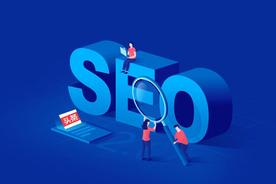
In the competitive landscape of health insurance and wellness services, providing a user-centric design is essential to attract and retain customers. Search Engine Optimization (SEO) tools can significantly contribute to this goal by ensuring that websites are not only optimized for search engines but also offer an exceptional user experience. Here's how SEO tools can advance user-centric design in this sector:
1、Keywords Research: SEO tools like Google Keyword Planner and SEMrush can help identify what potential customers are searching for regarding health insurance and wellness services. By understanding these keywords, companies can tailor their website content, making it more relevant and user-friendly.
2、User Intent Analysis: Tools like Google Analytics provide insights into user behavior on the website. Analyzing the pages with high bounce rates or low dwell time can indicate if the content meets user expectations or if there is a need for improvement.
3、Mobile Optimization: With a significant number of users accessing the internet via mobile devices, mobile optimization becomes crucial. SEO tools such as Google's Mobile-Friendly Test can help assess if a website is mobile-friendly, ensuring users have a seamless experience irrespective of the device they use.
4、Site Speed Optimization: SEO tools like GTmetrix and PageSpeed Insights can measure website speed, which is a critical factor in user experience. Slow-loading sites frustrate users and may lead to higher bounce rates.
5、Content Optimization: Tools like Yoast SEO can help ensure that the content on the website is not only informative but also optimized for search engines. This includes using appropriate meta descriptions, headings, and alt text for images, making the content more accessible and engaging for users.
6、Voice Search Optimization: As voice search becomes more prevalent, tools like AnswerThePublic can help identify long-tail keywords and questions users might ask, allowing companies to create content that caters to voice search queries.
7、Local SEO: For businesses operating in specific geographical locations, local SEO tools like Moz Local can help optimize the website for local search results, making it easier for users to find services in their area.
8、Link Building: Tools like Ahrefs and Majestic can help identify opportunities for link building, which can improve website authority and trustworthiness, enhancing the overall user experience.
9、Social Media Integration: SEO tools that integrate with social media platforms can help track user engagement and feedback, providing valuable insights for improving the website's user-centric design.
10、Continuous Monitoring and Improvement: SEO tools continuously monitor website performance, user behavior, and search engine algorithms. This data-driven approach allows for ongoing improvements to the user-centric design, keeping pace with changing user needs and search trends.
By leveraging these SEO tools, health insurance and wellness service providers can enhance their user-centric design, leading to increased customer satisfaction, higher engagement, and ultimately, business growth.
评论列表 (0条)